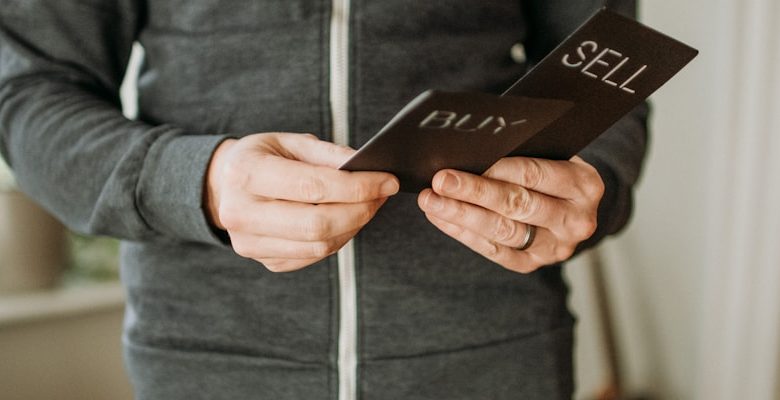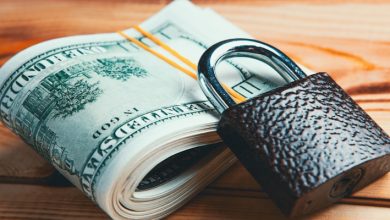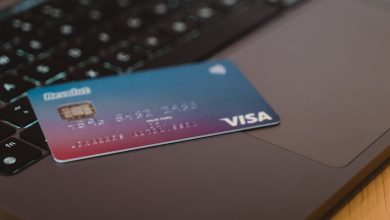How to Identify and Avoid Fake Crypto Exchanges

- Understanding the Risks of Fake Crypto Exchanges
- Key Signs to Look for in Fake Crypto Exchanges
- Tips for Verifying the Legitimacy of Crypto Exchanges
- Common Scams Used by Fake Crypto Exchanges
- Protecting Your Investments from Fraudulent Exchanges
- Steps to Take if You’ve Fallen Victim to a Fake Crypto Exchange
Understanding the Risks of Fake Crypto Exchanges
When it comes to fake crypto exchanges, there are several risks that users need to be aware of in order to protect their investments. One of the main risks is the potential for loss of funds. Fake exchanges often lure users in with promises of high returns, only to disappear with their money once it has been deposited. This can result in significant financial losses for unsuspecting investors.
Another risk of fake crypto exchanges is the potential for identity theft. These platforms often require users to provide personal information, such as their name, address, and financial details, in order to create an account. This information can then be used by cybercriminals for fraudulent activities, putting users at risk of identity theft and other forms of financial fraud.
Additionally, fake exchanges can also pose a risk to users’ personal information. In some cases, these platforms may be set up with the sole purpose of collecting sensitive data from users, which can then be sold to third parties or used for malicious purposes. This can result in a breach of privacy and potentially expose users to further risks down the line.
Key Signs to Look for in Fake Crypto Exchanges
When looking for a fake crypto exchange, there are several key signs to watch out for. One common red flag is a lack of regulation or licensing. Genuine exchanges are typically registered with financial authorities to ensure they comply with legal requirements. Another warning sign is poor security measures. Legitimate exchanges invest in robust security protocols to protect users’ funds and data. Additionally, be wary of exchanges with unrealistic promises of high returns or guaranteed profits. Remember, if it sounds too good to be true, it probably is. Lastly, check for reviews and feedback from other users. If an exchange has a bad reputation for scamming customers or withholding funds, steer clear. By staying vigilant and conducting thorough research, you can avoid falling victim to fake crypto exchanges.
Tips for Verifying the Legitimacy of Crypto Exchanges
When it comes to verifying the legitimacy of crypto exchanges, there are several key tips to keep in mind. First and foremost, it is essential to research the exchange thoroughly before making any transactions. Look for user reviews and ratings online to get a sense of the exchange’s reputation. Additionally, check to see if the exchange is regulated by any official authorities, as this can be a good indicator of legitimacy.
Another important tip is to verify the physical address and contact information of the exchange. Legitimate exchanges will have a physical office location and a working phone number or email address. Be wary of exchanges that only provide a P.O. box or a generic email address, as this could be a red flag.
Furthermore, look into the security measures that the exchange has in place to protect user funds. Legitimate exchanges will have robust security protocols, such as two-factor authentication and encryption, to keep your assets safe. If an exchange has a history of security breaches or hacks, it is best to steer clear.
Lastly, be cautious of exchanges that offer unrealistic returns or promise guaranteed profits. Remember that investing in cryptocurrencies is inherently risky, and there are no guarantees of returns. If an exchange seems too good to be true, it probably is. By following these tips and staying vigilant, you can avoid falling victim to fake crypto exchanges and protect your investments.
Common Scams Used by Fake Crypto Exchanges
One common scam used by fake crypto exchanges is known as the “pump and dump” scheme. In this scheme, the exchange artificially inflates the price of a certain cryptocurrency to attract investors, only to sell off their own holdings at a profit once the price has been pumped up. This leaves unsuspecting investors with worthless coins and a significant financial loss.
Another common scam is the “phishing” scam, where fake exchanges will mimic legitimate exchange websites in an attempt to steal users’ personal information, such as login credentials and financial data. These fake websites are often very convincing, making it difficult for users to distinguish between the real and fake platforms.
One of the most prevalent scams is the “exit scam,” where a fake exchange will suddenly shut down and disappear with all the funds deposited by users. This type of scam leaves investors with no way to recover their money, as the operators of the fake exchange are untraceable.
Additionally, fake exchanges may engage in “spoofing” or “wash trading” to manipulate the market and artificially inflate trading volumes. This gives the impression of a thriving exchange, attracting more users to deposit their funds. However, in reality, these inflated volumes are often fake and do not represent actual trading activity.
Protecting Your Investments from Fraudulent Exchanges
When it comes to protecting your investments from fraudulent exchanges, there are a few key steps you can take to ensure you are using a legitimate platform. First and foremost, always do your research before signing up with a new exchange. Look for reviews from other users, check if the exchange is registered with regulatory authorities, and verify the security measures they have in place to protect your funds.
Another important tip is to never give out your private keys or passwords to anyone. Legitimate exchanges will never ask for this information, so if you are being pressured to provide it, consider it a red flag. Additionally, be cautious of exchanges that promise high returns with little to no risk. Remember, if it sounds too good to be true, it probably is.
One of the best ways to protect yourself from fraudulent exchanges is to diversify your investments across multiple platforms. This way, if one exchange turns out to be a scam, you won’t lose all of your funds. Finally, always keep an eye out for any suspicious activity on your account. If you notice any unauthorized trades or withdrawals, report them to the exchange immediately and take steps to secure your account.
By following these tips and staying vigilant, you can help protect your investments from fraudulent exchanges and ensure your funds are safe and secure. Remember, it’s always better to be safe than sorry when it comes to investing in cryptocurrency.
Steps to Take if You’ve Fallen Victim to a Fake Crypto Exchange
If you have unfortunately fallen victim to a fraudulent crypto exchange, it is crucial to take immediate action to protect yourself and potentially recover any lost funds. Here are the steps to take if you find yourself in this unfortunate situation:
1. **Stop all Transactions:** The first step is to stop all transactions on the fake crypto exchange immediately. This will prevent any further loss of funds or personal information.
2. **Contact Authorities:** Report the incident to the relevant authorities, such as law enforcement agencies and financial regulators. They may be able to investigate the scam and help you recover your funds.
3. **Alert Your Bank:** If you made any deposits or withdrawals to the fake exchange using your bank account or credit card, contact your financial institution to report the fraud. They may be able to reverse the transactions and prevent any additional unauthorized charges.
4. **Change Your Passwords:** If you used the same password for the fake exchange as you do for other accounts, change those passwords immediately. This will help prevent further unauthorized access to your personal information.
5. **Monitor Your Accounts:** Keep a close eye on all of your financial accounts and personal information for any suspicious activity. If you notice anything unusual, report it to the appropriate authorities right away.
By following these steps, you can take proactive measures to protect yourself after falling victim to a fake crypto exchange. Remember to always research and verify the legitimacy of any exchange before making transactions to avoid future scams.



